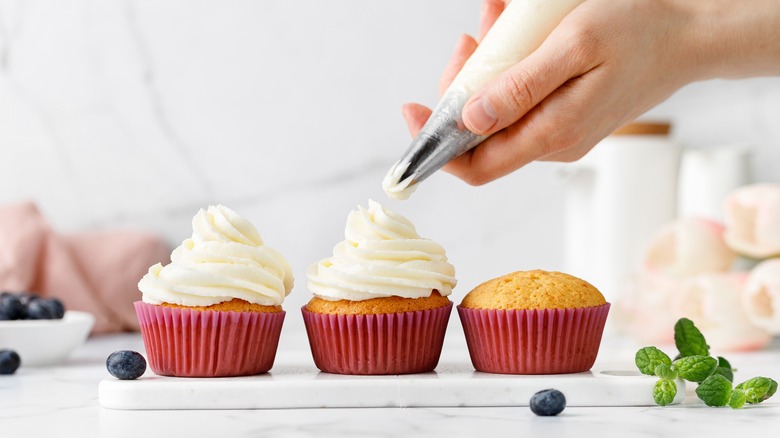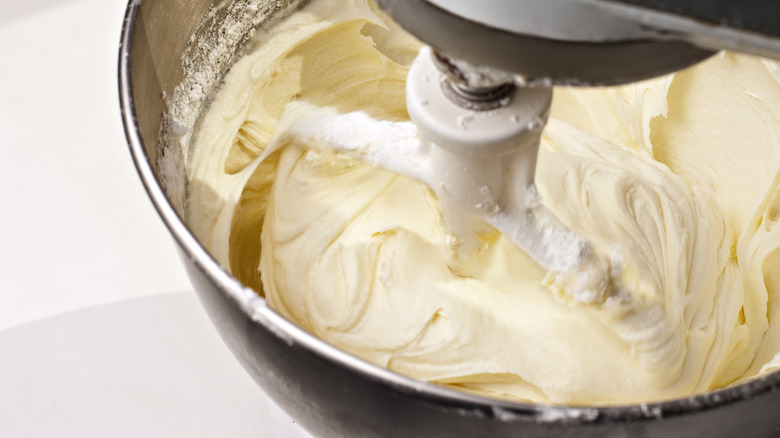How To Thin Out Store-Bought Frosting
If you ask most bakers, they'll tell you that store-bought frosting is one of the best inventions. It's accessible, quick, and best of all, it can easily be elevated with simple adjustments. Need more flavor? Splash in some vanilla extract. Too sweet? Balance the sugar with a pinch of salt. There are endless opportunities to use ingredients from your pantry to upgrade the flavor of any plain ready-made frosting, and thinning the texture is just as easy.
When you need to thin out canned frosting, use milk or whipping cream. You can use water as a substitute if you're out of milk, but the added creaminess of milk makes the frosting richer. Depending on your preference, any dairy-free alternative for whole milk also works the same. There are no exact measurements for this technique, so beware that you'll need to conquer any fear of eyeballing ingredients. It's all about the ratio of frosting to milk. Start by tossing in about a teaspoon of milk and whisk. From there, you're the judge. If it's too thick, keep adding teaspoons of milk until it reaches the desired consistency. If you accidentally add too much milk, don't panic: Just add small measurements of powdered sugar or cream cheese until the frosting thickens back up.
Turning frosting into icing
The neat thing is that this technique works for any type of frosting. Whether it's Duncan Hines buttercream or whipped Pillsbury, the basic science behind throwing a thin liquid into a thick, fluffy frosting never fails. In fact, thinned-out frosting is technically just icing, or store-bought icing if you dabble in the cookie decorating aisle. The thinner you go, the more it becomes like a glaze. So, there's a lot of room to be creative with this process. In the history of DIY icings, there are probably no two that are exactly the same, so don't worry if yours doesn't come out perfect on the first try.
For best results, remember that you can always put more in, but you can't take more out. Combine any embellishing liquid ingredients like food coloring or vanilla extract before adding your thinning agent rather than after. Otherwise, it could turn out oilier than you expect. If all you want to do is make it easier to spread, skip the liquids entirely and pop the frosting in the microwave for about 20 seconds. If you tack on more time, it will get closer to a glaze. The key is trial and error. You'll find out what methods work for you the more you practice. Consider the store-bought frosting as a blank canvas, and you as the artist. Once you perfect your technique, you'll be able to turn frosting into icing in no time.

